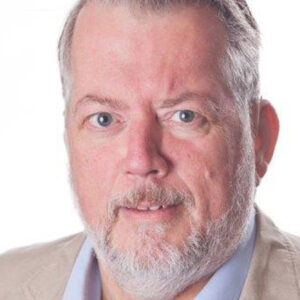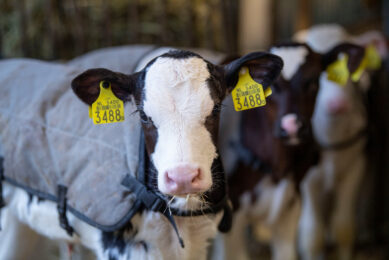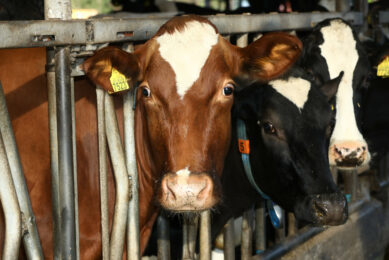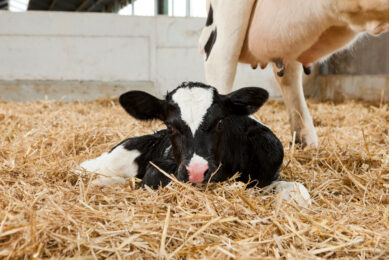Farm report, Germany: Less labour, higher animal value
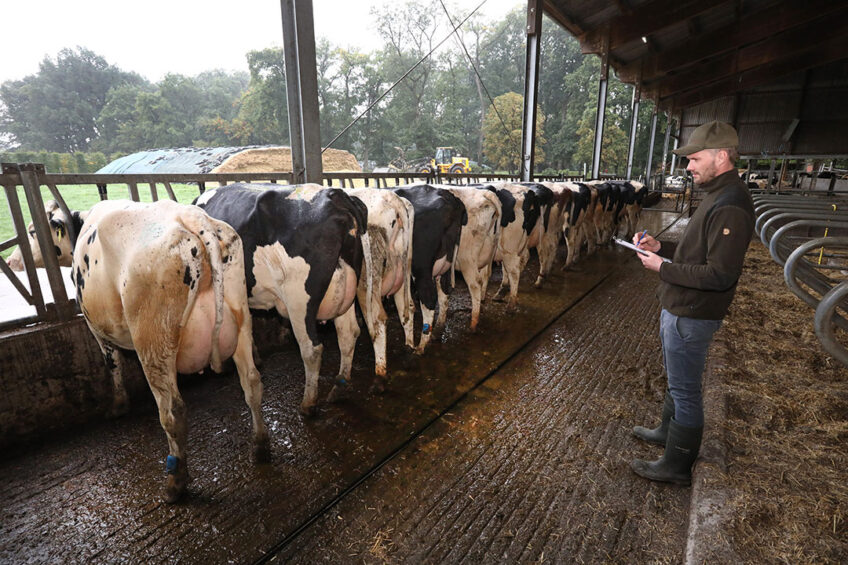
The goals at this farm are to produce good, uniform, and healthy youngstock that calves at a younger age with less labour and antibiotics, all under good working conditions.
Bremer 52o Nord has set these goals when building a new youngstock rearing location with 1,200 places. All these goals have been achieved and, despite a substantial investment, annual costs have fallen. “We went from rearing youngstock from 5 locations to one,” says Lukas Bremer.
Previously we needed 20 hours of labour per animal per year, now we need about 8.”

“Previously we needed 20 hours of labour per animal per year, now we need about 8. With 675 delivered high-in-pregnancy heifers and 450 uniform young bulls per year, that is more than 3 man-years less per year. That already covers a large part of the annual costs of the new construction.”
 Profile
Profile
Owners: Bremer 52o Nord is a collection of companies owned by Onno Bremer (57) and his sons Lukas (29, pictured) and Thilo (31).
Animals: The conglomerate keeps 1,150 dairy cows, 1,200 youngstock, 70,000 broilers and 2 manure digesters at 3 locations.
Farm: There are 1,050 hectares for ploughing, of which 220 are owned and 680 are regular leases. Of this, 250 ha is grass, 150 ha wheat and rye (partly for sale, partly for animal feed) and 750 ha of corn. In addition, about 350 hectares of crops, mostly silage corn, are purchased. All land work is done in-house, there is also a large branch of contract work for third parties. A total of 30 employees work at the company.
Strategy: Optimisation, repayments and waiting for opportunities to make steps
Higher sale value of animals
The higher sales value of the calved heifers is more than enough to cover the rest of the additional costs. Bremer has almost all heifers calve on his own dairy farm. About half of it is sold 3 to 6 weeks after calving. Some to regular customers, also in the Netherlands, and some in free trade. “Because the animals are now much more uniform than in the old situation and because we can deliver large groups at once, the value of the animals has increased by €150 to €200 euros compared to before.”
The heifers now calve, using heat synchronisation, at an average of just 22 months. The antibiotic reduction target was also more than achieved. “Diarrhoea hardly ever occurs, we actually don’t experience lung diseases anymore,” says the German.

Rearing, staff, and training
The rearing location is completed with 2,5 employees, a German manager and 2 Latvians. “In principle, we don’t come more than once a week to check and discuss matters,” says Lukas. The buildings are light, with lots of fresh air and everything that can be automated is automated. Internal transports are easy, an electric golf cart replaces the wheelbarrow. “The pitchfork and broom wear out more from standing than from working with them,” the German grins. “It is often a matter of searching where they are, so little do we use them.” The working hours, on weekdays from 7:15 am to 5:30 pm, are certainly no obstacle to binding employees. “Working hours like this only work if you have structure in your company,” Lukas knows. “We have very little staff turnover and recruiting new staff when 1 of our 30 employees leaves does usually not cause any problems.”
What does play a role in this is that the entrepreneur continuously invests in training of people. “Our milkers receive a course every 6 months to keep them on their toes. Anyone who wants or needs a different training will be offered it, including travel and accommodation costs.” Bremer estimates that he invests more than €20,000 in this every year. Yet not everything goes smoothly in that area. “One of our 3 herd managers is taking over the business of her parents-in-law and started working less, so we are looking for an addition to the team – herd management. They are scarce, so if you know a good one?” he comments.

No cuts were made in the construction of the new location. The investment in buildings alone amounted to about €3 million, with an additional €1,5 million in livestock and feed supplies. However, the entire plan has been carefully thought out in advance. The 4 stables have a total of 1,200 young cattle places. Newborn calves are supplied almost daily with a specially equipped VW Transporter bus that also takes full milk for the youngest animals from the site 15 km away. 150-200 dry cows and high-bearing heifers are housed there. After calving they go to the 3rd location, 3 km from the calving shed. Some 950 cows are milked there continuously.
Calves
The newborn calves receive 4 litres of colostrum at the calving location. They go to the rearing stables within a day and arrive there in a compartment of 22 (2×11) in individual boxes. 6 compartments are for rearing heifer calves, 2 for housing bull calves up to the age of more than 2 weeks. There is underfloor heating under the boxes to heat the animals for the first 2 weeks during the winter period. The compartments have a lot of content, automatic curtains limit the influence of the wind. The overhanging roof protects the employees against inclement weather. “A small investment that provides a lot of job satisfaction.”

Slots have been grinded in the feed path in the sections with bull calves so that the bulls have more grip when delivered. The floor at the heifer calves is flat. “The heifers are delivered less frequently, once every 12 weeks. There, easy cleaning and hygiene are more important.” Cleaning is done fanatically. The stable is spotlessly clean. Only where the boxes have just been scattered are a few straws on the feed path.

The daily cleaning of the 8 compartments is facilitated by a drainage channel under the drinking and feeding buckets. The cleaning and disinfection of the department itself is unique. The single boxes made of sturdy steel hang from cables that can be electrically winched. “We know this system from the feed and water lines from our 2 poultry houses. By winching the boxes, they are easy to bring to working height and cleaning is a piece of cake. Cleaning and disinfecting a compartment now takes less than 3 hours. At the old locations it took 7 hours for the same number of calves.”
The animals are reared according to a high schedule. The first 3 weeks they get unlimited fresh milk mixed with milk replacer. The mixture is slightly acidified to a pH of 5 to improve digestion. After a week, the additional feeding with TMR roughage starts, from 21 days the milk yield is gradually reduced. At the age of 12 weeks, the animals are completely on roughage. “Double stress is out of the question. A week before they are moved to the group pens in the next barn, they must already be weaned and used to the solid feed.” For the same reason, the TMR ration is only adjusted when the intake is more than 2,5 kg per calf per day, they have been then in the group pens for several weeks.

The rearing calves go to the next barn at the age of 3 months, into straw pens with a solid floor and a manure scraper. They start in pairs of 4 or 6. “Always an even number,” says Lukas Bremer. “They need a girlfriend; they are less successful in odd numbers.” His practical experience is confirmed by very recent scientific research.
The experience is that the transition from individual boxes to small groups is stressful. That is why the solid floor is scattered with straw on the first day and the manure chain does not run that day. The calves are also fed additional water via buckets for 14 days.
Uniformity must be as great as possible. Weight differences grow faster than the calves.”
The calves pass through this barn, where they are fed without restrictions. After an additional 6 weeks they come into groups of 10 to 14 calves. They are selected based on size and weight. “Uniformity must be as great as possible. Weight differences grow faster than the calves.” 6 weeks later they move to 1 of the 2 identical 2 + 2-row cubicle stables.

The first weeks they are still fed there on a limited basis. From the age of 1 year, they come on a feeding schedule and are limited. “The trough is empty for an average of 5 hours a day.” Yet that does not result in growth differences. There are plenty of eating places. All animals can eat at the same time. Feeding is done with a mixer wagon that dispenses the ration by weight per group. The feed provision is registered per group. From 40 days before calving, the animals receive unlimited feed again. 1 to 2 months before calving, the high-bearing heifers go to the calving farm.

Insemination
All this results in high growth. At 1 year of age, most animals weigh more than 400 kg. That is why Bremer starts an Ov-Sync program from a year and a day with synchronisation of the animals. “With less than 10 animals per year we have to wait 2 weeks to a month because of insufficient development.” The costs of the Ov-Sync are approximately €8 per animal. “It saves a lot of labour and improves the results.”
Due to the hormone treatments, most of the yearlings are inseminated for the first time at 12.5 months. Sexed sperm is used up to twice, which always gives lower fertilisation results, than conventional sperm. The conception rate is 64. Most of the heifers calve within 22 months, of which 65% give birth to a heifer. “We want a lot of heifer calves to raise for sale, which is why we use sexed sperm so much. An additional advantage of the high percentage of heifer calves is that they are lighter, making birth easier and the mother has a better start in milk production.” The top production of 60 to 90 days after calving is on average at 38 kg per day for the heifers. They are also very persistent. 300 days after calving, production is still at an average of 30 kg per day. The average production on the dairy farm is just above 11,500 kg of Vlog milk.

The federations at the rearing location are fairly simple: dry grass-silage, corn-silage, turnip, cornflour, and minerals. The use of soybean meal is out of the question because of the Vlog milk. There is a TMR calf mix and a TMR final mix. These are mixed in 25% steps from complete calf to complete final mix. “We only use top quality roughage; we don’t take any risks with its quality. Anything that tends to mould, spoilage or has a nutritional value that is too low, goes into one of our digesters.”
Those interested in the herd management position can send an email to Lukas: buero.bremer@gmail.com
Join 13,000+ subscribers
Subscribe to our newsletter to stay updated about all the need-to-know content in the dairy sector, two times a week.


